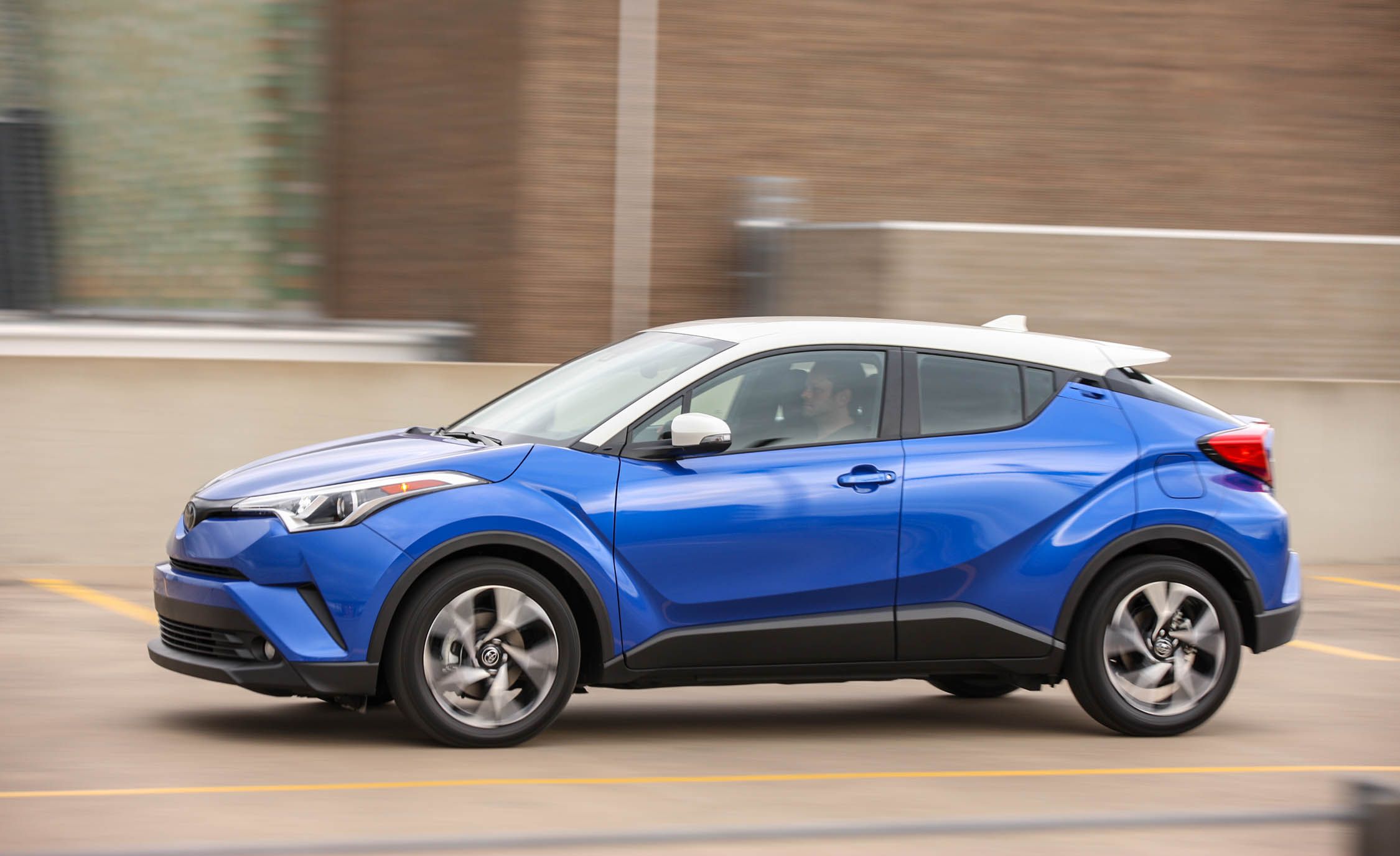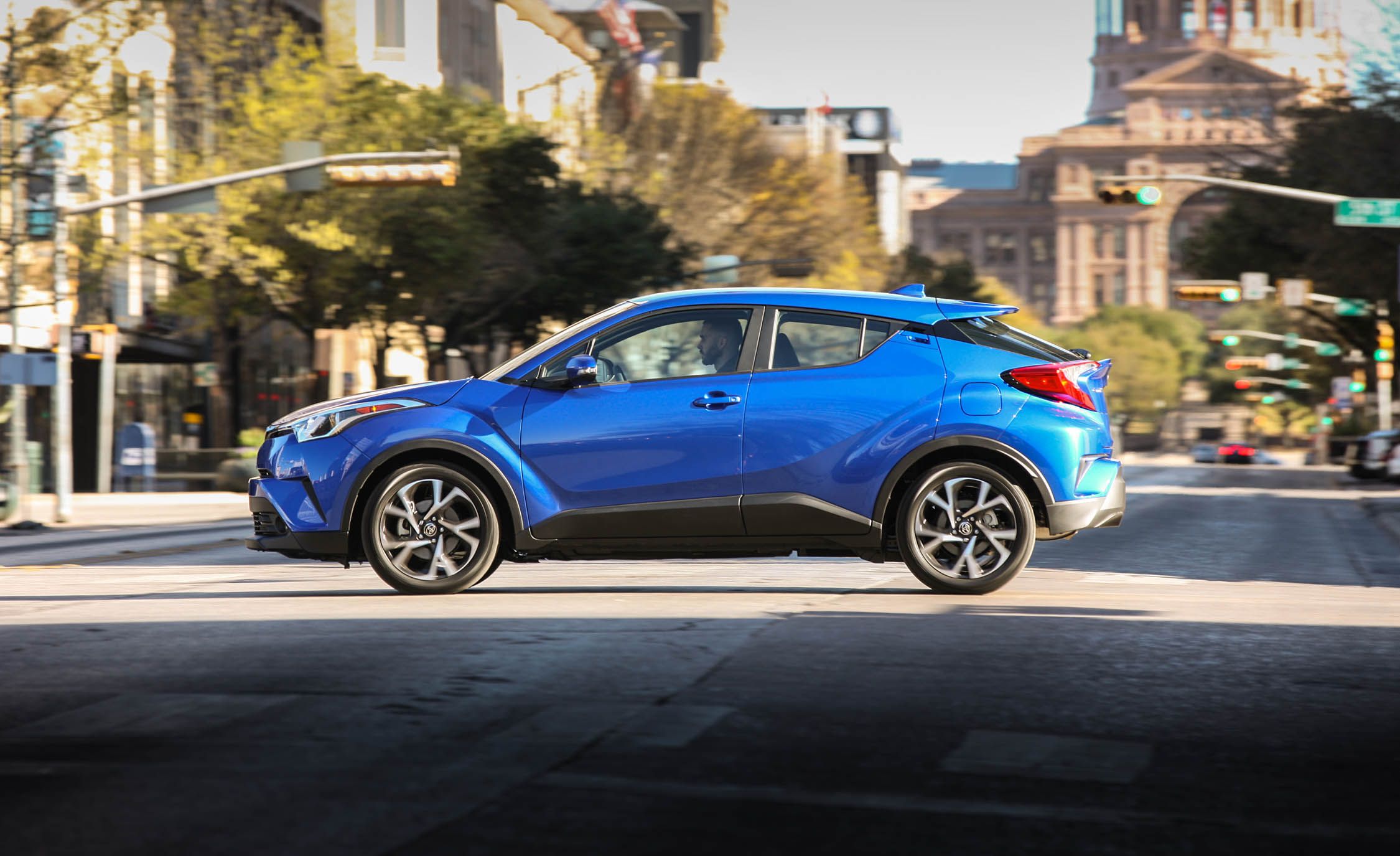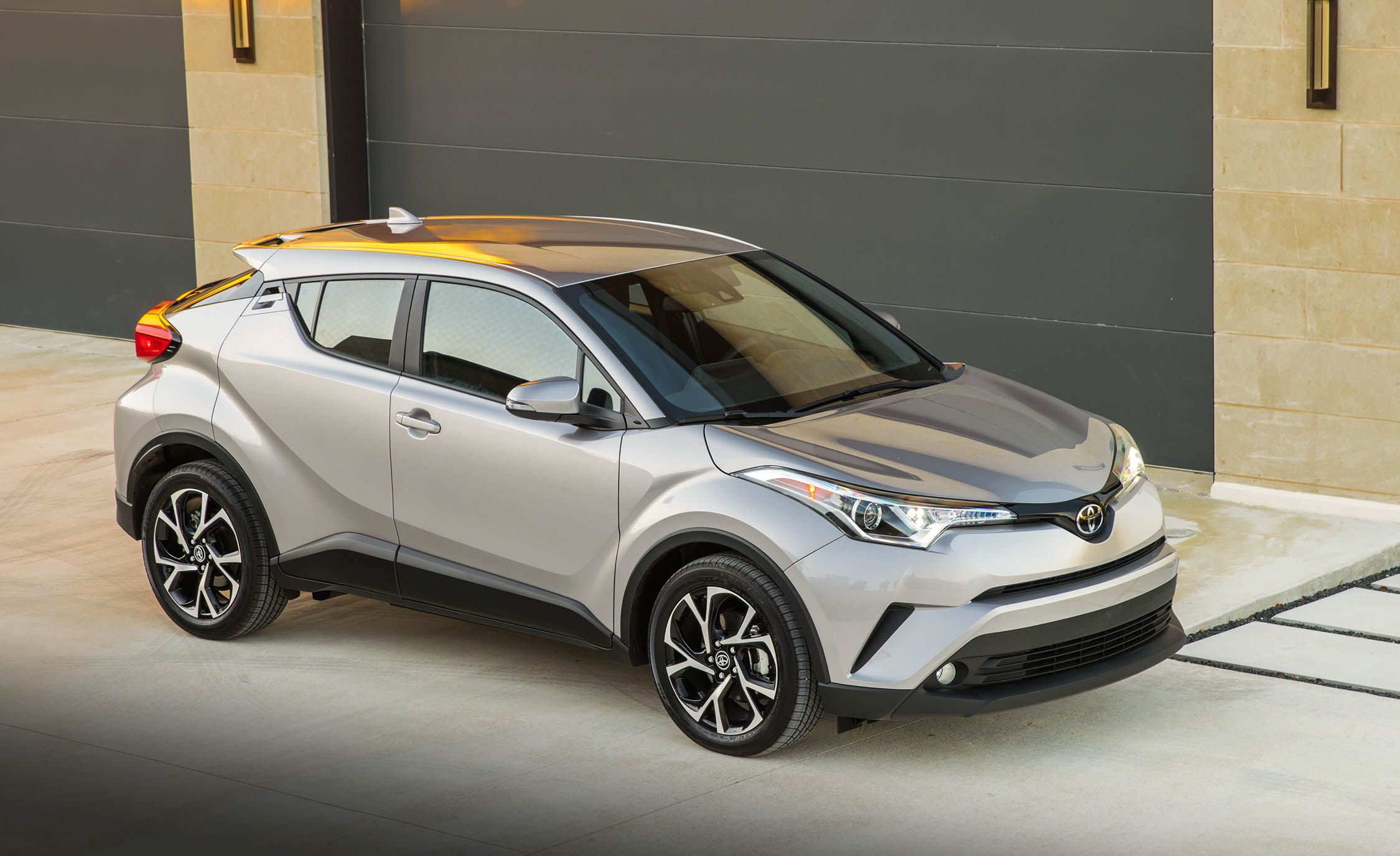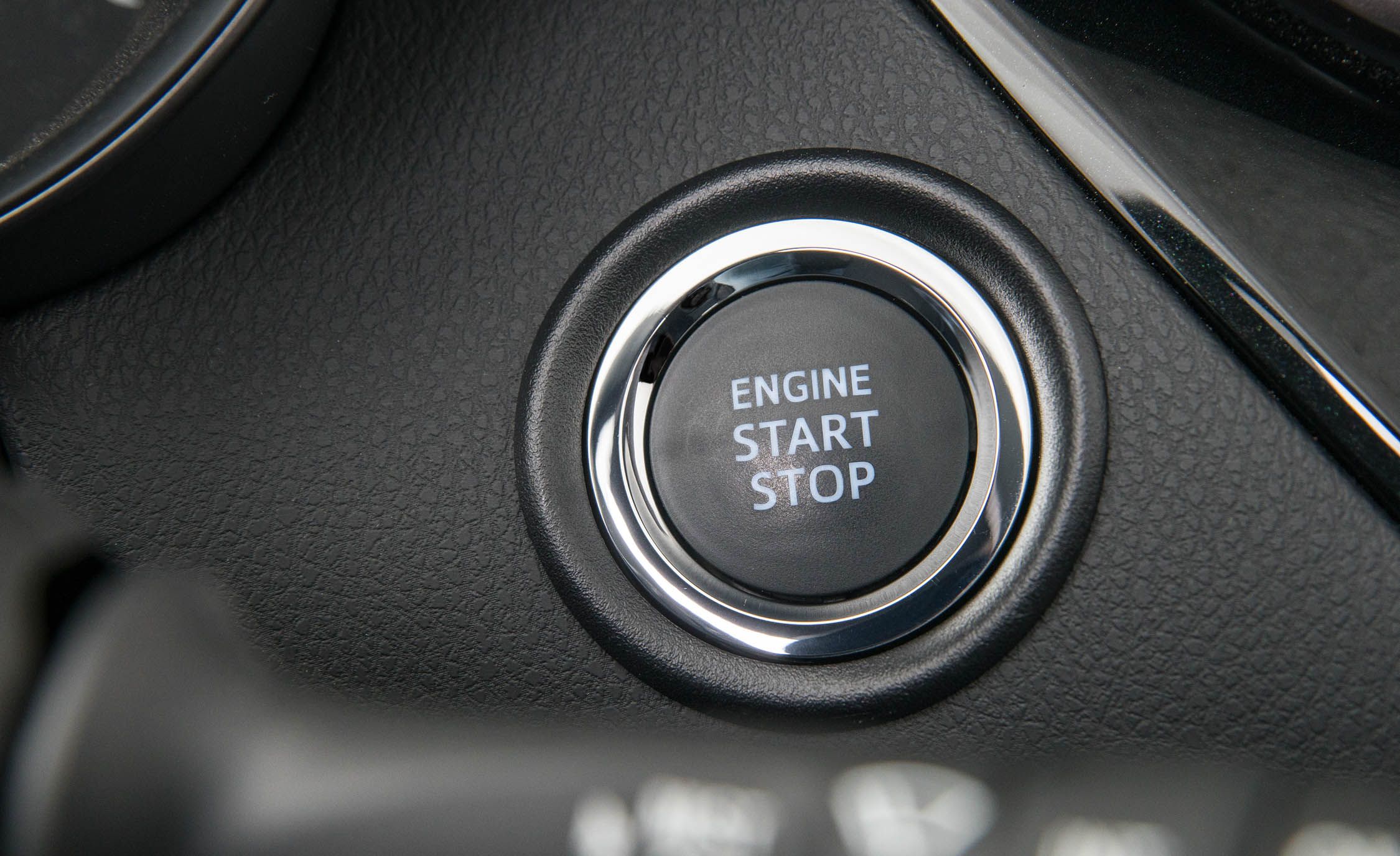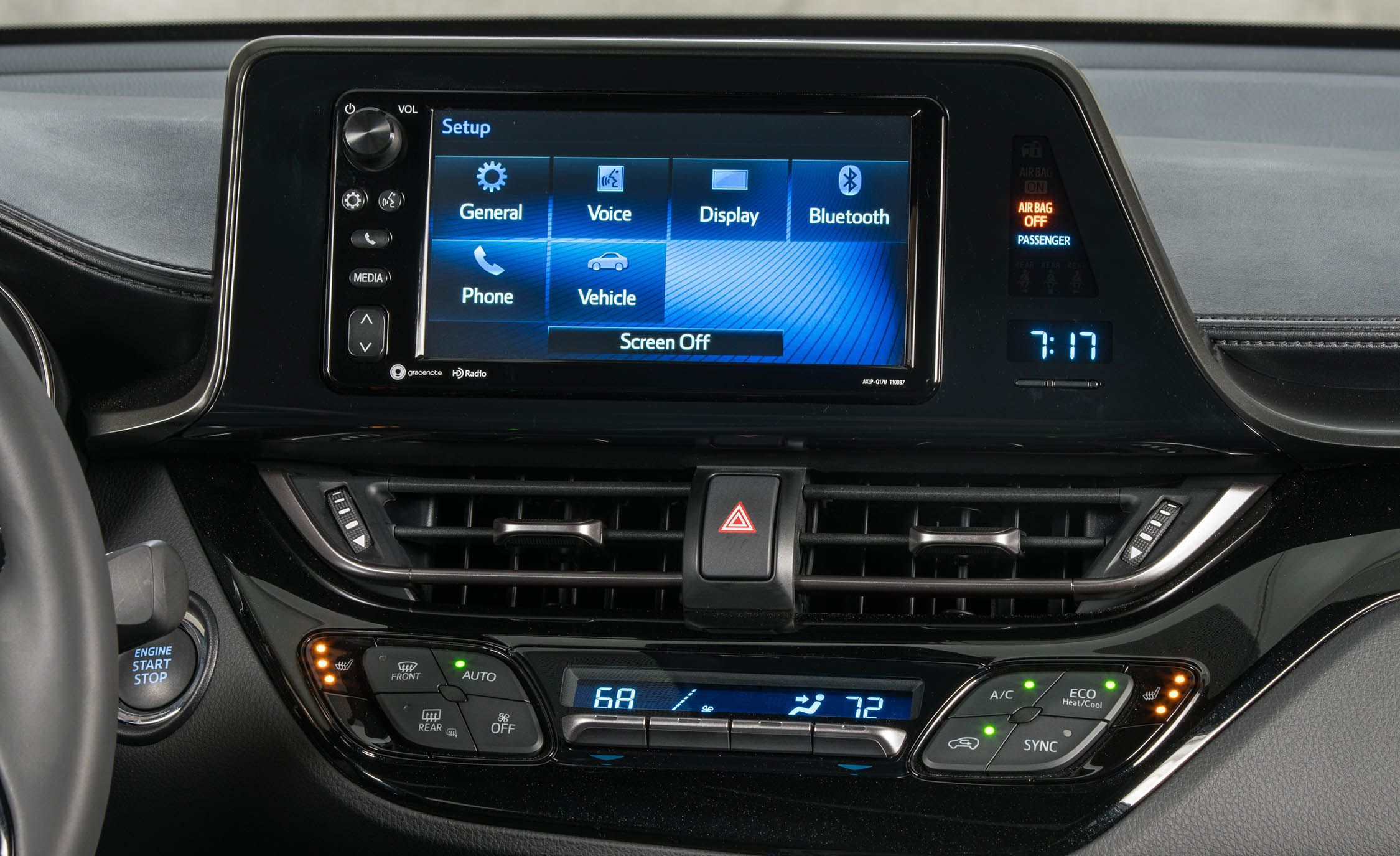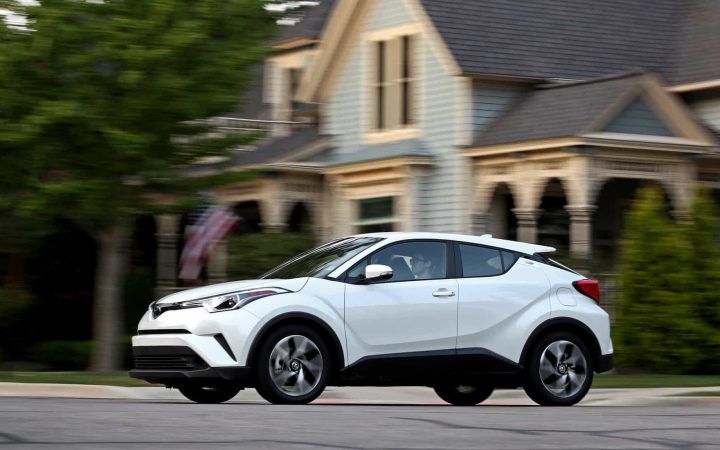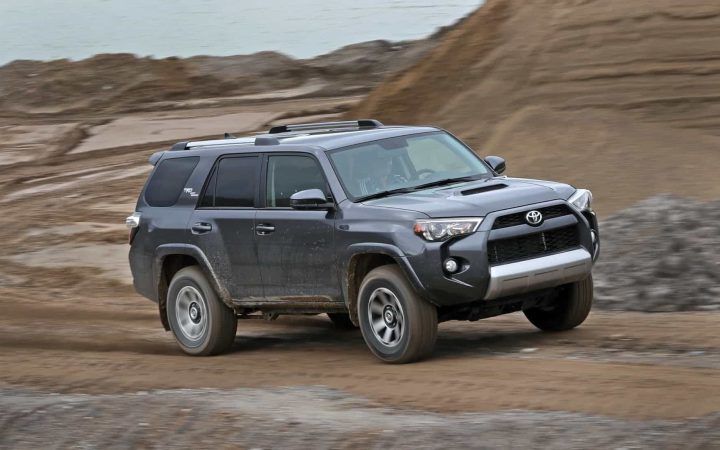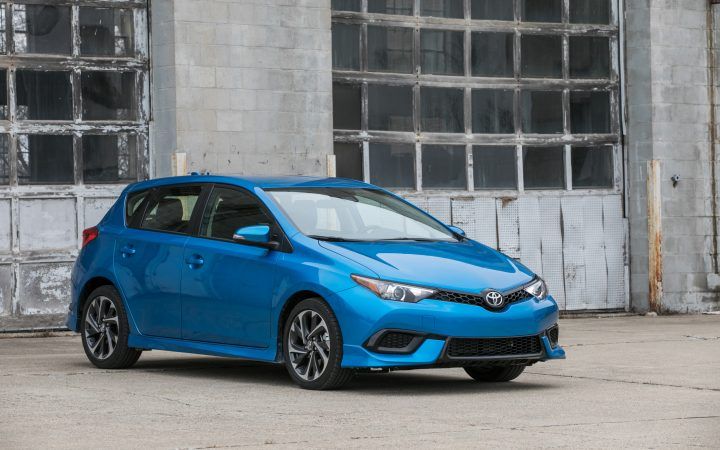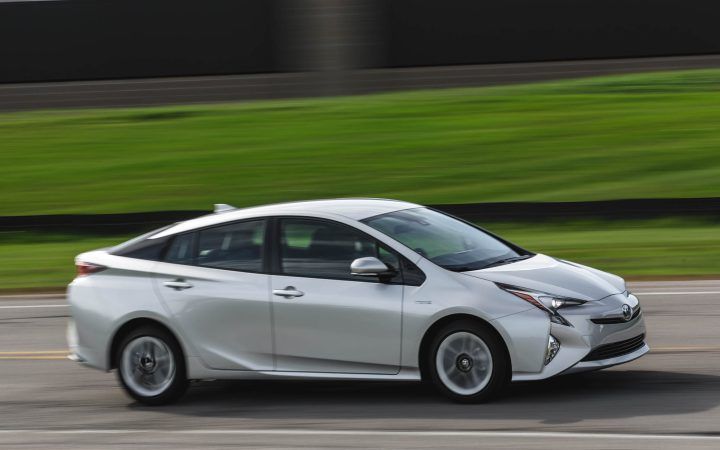The 2018 Toyota C-HR is like the embodiment of lazy conventional wisdom. It ain't lower, wider, sleeker or faster than anything out there, and it's got some ridiculous taillights. But, you know what? It's not that bad either.
This subcompact crossover has four doors, but at first glance, it looks like it's only got two. And, yo, those 18-inch wheels are eye-catching as heck. You can choose between the XLE and XLE Premium trims, and no matter what you go for, you'll be getting a well-equipped ride. Dual-zone climate control and an auto-dimming rearview mirror are standard, and it's got a suite of advanced safety features too (Toyota Safety Sense P, or TSS-P). The XLE Premium even comes with keyless entry and start, and heated front seats with driver power lumbar adjustment.
Now that trunks are disappearing faster than smallpox, the C-HR is naturally a five-door thing like a crossover. But, let's be real, it's got no off-road ability at all, even with optional all-wheel drive. It's kinda like the old Toyota Venza and Scion xD, with a shout-out to the Matrix. The letters C-H-R stand for Coupe (even though it's not one) and High Rider (even though it doesn't ride all that high). It's like a philosophical rejection of the boxy-box Scion xB aesthetic that once seemed like it would last forever, but now only exists in the Kia Soul.
The Toyota C-HR can be considered as Toyota's take on the Nissan Juke with a nod to the Honda HR-V. It is larger than both its competitors, boasting a 103.9-inch wheelbase that is 4.3 inches longer than the Juke's and an overall length of 171.2 inches, which is 8.8 inches longer. Its design features high-mounted rear door handles and a shortened tail, similar to its rivals, and its profile is often compared to that of a crouching chimpanzee.
Underneath its unique exterior, however, is a mechanical package that is surprisingly ordinary. The C-HR is built on the Toyota New Global Architecture (TNGA), which is also used in the current Prius models. It is expected that the forthcoming Corolla will share much of this CUV's basic engineering.
The C-HR has a unified structure with a strut front suspension and a multilink setup in the rear. It is equipped with electrically assisted rack-and-pinion steering and uses ventilated discs in front and solid discs in the rear for its anti-lock brake system. The engine is positioned transversely up front, driving a continuously variable automatic transmission (CVT). It adheres to conventional small-car wisdom.
Powering the C-HR is a 2.0-liter four-cylinder engine from Toyota's decade-old ZR engine family. It has dual overhead cams, 16 valves with variable timing, and a relatively long stroke. However, it is rated at only 144 horsepower at 6100 rpm and 139 lb-ft of torque at a more reasonable 3900 rpm. While unpretentious and modest, this powerplant may not be the best match for a CVT.
CVTs tend to perform better when paired with modern turbocharged engines that have a thick low end and a torque curve that starts down low and stays flat for a long time. The C-HR's naturally aspirated inline-four has a peaky and not-very-generous torque curve, which causes the CVT's drive belt to hunt for thrust. This results in a thrumming drone that is most noticeable at full throttle.
The C-HR's drivetrain is acceptable for a CVT by 2011 standards. However, it feels and sounds outdated for 2018. It is worth noting that the preprogrammed virtual gears accessed via the transmission lever provide some amusement, but it would be more convenient if shift paddles were present behind the steering wheel. Nevertheless, the half-hearted attempt at manual shifting is better than none at all.
The C-HR's 144 horsepower struggles to move its 3286-pound weight, regardless of the transmission type. Even with full acceleration, the vehicle takes a sluggish 11 seconds to reach 60 mph and 18.4 seconds to complete a quarter-mile at 79 mph. While using the M mode in the transmission marginally improves performance, the vehicle's lack of responsiveness during passing situations is concerning. It takes the C-HR a leisurely 7.5 seconds to accelerate from 50 to 70 mph, which is half a second slower than any of the six comparable vehicles tested in 2015. It also falls 1.8 seconds behind the 146-hp Mazda CX-3 Touring, which won that comparison despite having to deal with the added drag of an all-wheel-drive system. The CVT transmission severely limits the C-HR's performance potential.
However, the vehicle does offer impressive fuel economy on the highway. Despite a mixed-use rating of 28 mpg, the C-HR achieved an impressive 37 mpg during our 200-mile highway fuel-economy test, which is six mpg higher than the official highway estimate.
The C-HR model lineup is equipped with 18-inch wheels and 225/50R-18 all-season tires, resulting in a maximum grip of 0.81 g on our skidpad with noticeable understeer. The steering is light and provides satisfactory communication through the leather-wrapped wheel; however, the overall driving experience is competent but unremarkable.
Toyota offers the C-HR in two trim levels, namely the XLE and XLE Premium, priced at $23,495 and $25,345, respectively. The XLE trim level is equipped with features such as adaptive cruise control, lane-departure warning, lane-keeping assist, projector-beam headlights, dual-zone automatic climate control, leather-wrapped steering wheel, shift knob, and a 7.0-inch touchscreen that controls entertainment and communication systems. The XLE Premium, which we tested, includes additional features such as illumination for the visor vanity mirrors, blind-spot monitoring, heated cloth seats, a proximity key, fog lights, and lights in the side-view mirrors that project the C-HR logo on the ground alongside the front doors. The only option we added was $194 worth of floor and cargo mats.
Despite the impressive feature content, there are some gaps in the C-HR's technology. Toyota's Entune audio suite is not available, and the backup camera's image is displayed in a small square embedded in the rearview mirror instead of the central screen. Apple CarPlay and Android Auto are also not offered as options. Additionally, the model lacks a navigation system, and drivers are advised to use their phones or plan their routes before starting the engine. It appears that Toyota has not fully embraced the latest technology.
The interior of the C-HR is intricately designed with piano-black plastic, however, the available space may not be spacious enough for some. The seats are well-crafted and supportive, although the rear passengers may experience some discomfort due to the sloping rear roof. Additionally, the cargo space is limited with the rear seats up, as compared to the Soul which offers 5 cubic feet more in such a situation. The C-HR's luggage volume is also on the lower end of the class norms when the rear seats are folded, but they do fold down flat. All U.S.-market C-HRs are manufactured at Toyota's plant in Sakarya, Turkey, and the material and assembly quality is of high standards.
As a Toyota, the C-HR has the potential to outlast you and your future generations if maintained properly. However, this vehicle requires some level of mechanical engagement to complement its unique bumper covers and trendy appearance. Just as Koko the gorilla learned sign language, this vehicle deserves some tricks of its own.







